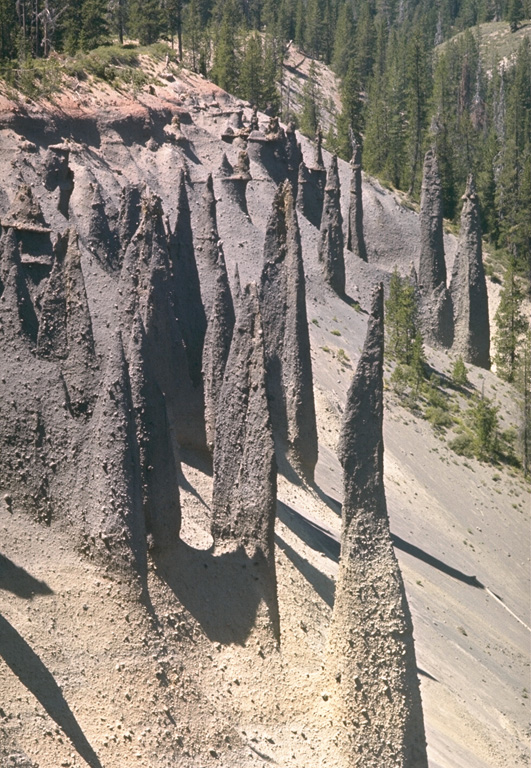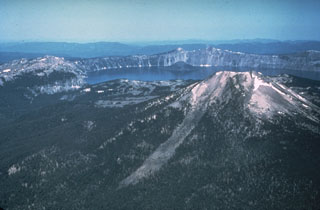Global Volcanism Program | Image GVP-03182

Erosion of the large pyroclastic flow deposit emplaced during the caldera-forming eruption of Crater Lake has exposed these pinnacles. The more resistant spires formed when the deposit was releasing hot gases after emplacement, forming fumarole pathways that cemented the grains together. The change in color of the deposit marks a change in the chemistry of the erupted rocks. The lighter-colored basal rhyodacite is overlain by gray (iron-and magnesium-rich) andesite.
Photo by Lee Siebert, 1972 (Smithsonian Institution).
![]() This image is made available under the Public Domain Dedication CC0 license, but proper attribution is appreciated.
This image is made available under the Public Domain Dedication CC0 license, but proper attribution is appreciated.
Keywords: pyroclastic flow | deposit | erosion | pumice | ignimbrite

Crater Lake
